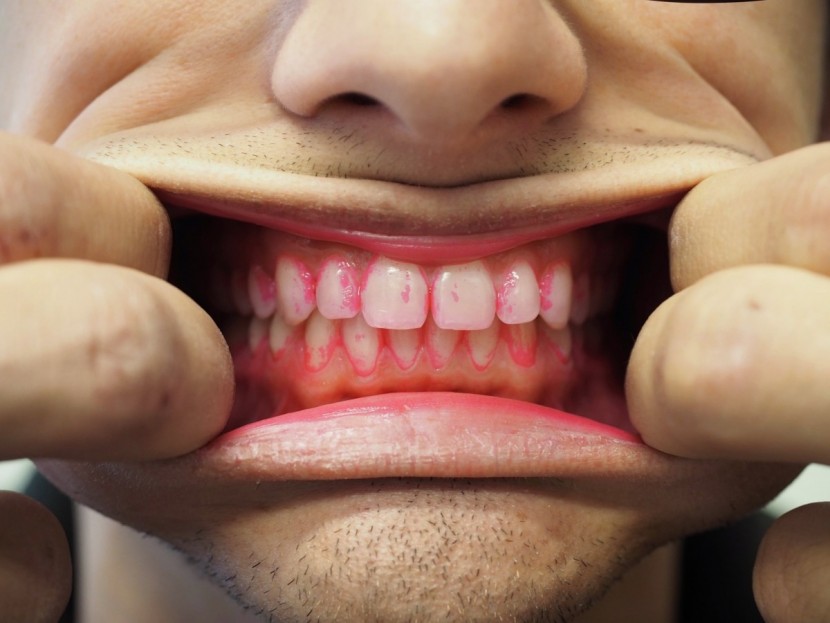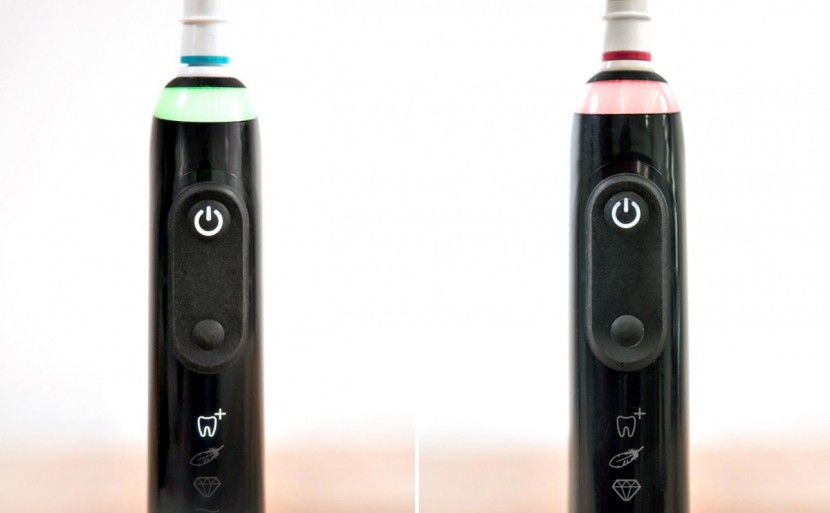Over the last several years, we have purchased a great deal of electric toothbrushes that are worth your consideration. Each year as new models are released, we purchase the most promising ones and get to brushing our teeth. We score them on their brushing comfort, cleaning abilities, ease of use, and battery life.
Cleaning
Firstly, we evaluated how well each brush cleaned. Based on the input from our experts, we came up with a method to test the cleaning power of each model. Our experts felt that the different cleaning modes were mainly unnecessary features, with the exception of a gentle mode for users with sensitive gums. We used the standard mode for all testers that felt fine with it and a gentler mode — if there was one — for our testers that had gums on the more sensitive side. We procured identical brush heads for each of our five testers for each model that we tested, and the group would use a different model of electric toothbrush each day. We used the stock brush head type that came with each toothbrush model and brushed with each model for two minutes, using a stopwatch to regulate our pace and brush in a quadrant method.
Each member of our testing panel would skip brushing in the morning and would chew a plaque disclosing tablet before brushing with the electric toothbrush. They were also instructed to eat as many sugary foods as possible. This, combined with the lack of brushing for around 16 hours, would lead to a sizeable buildup of visible plaque. We would then take before and after pictures and score the results.
This test was based on the idea that your electric toothbrush cannot clean where it cannot reach. A common misconception is that sonic toothbrushes use sonic waves to actually blast plaque off of your teeth, when in reality, “sonic” is just referring to how fast the bristles are vibrating (Sonic and ultrasonic toothbrushes do have a proven fluid dynamics effect, where they are able to disrupt bacteria up to four mm away from the actual brush head in certain circumstances, but four mm isn't very far, still requiring you to effectively move the toothbrush into all the cracks and crevices of your mouth).
Our test highlights which toothbrushes were the most intuitive to use while brushing, the most maneuverable, and the models that most people will miss the least number of spots in their mouth, based on our group of testers. Each tester used each toothbrush model only once to use each model in a “worst-case scenario,” as each user would miss the most spots when the brush was the most unfamiliar. We also had each tester bring in their manual toothbrush and complete the test to act as a control.
Comfort
When it came to evaluating comfort, we assessed three categories: brushing comfort and noise level, as well as if there was a pressure sensor. Our panel of testers ranked the brushing comfort after having used them multiple times over a period of two weeks, as well as by comparing how each brush felt when using all of them in succession. We also had them rate the level of irritation the noise of each model caused them. This captures what the person brushing would actually hear, as there are some interesting effects due to bone conduction that affect the sound. Additionally, we also had a bystander rate the noise to see if any of the brushes are loud enough to disturb anyone else around while you are brushing your teeth.
Many of these brushes have a pressure sensor to prevent you from applying too much pressure. They do this either by slowing down the brush or lighting up when triggered, alerting you to be a little less aggressive. Too much pressure can actually lead to some pretty serious consequences, such as gum recession or even damaging the enamel on your teeth.
Ease of Use
Our next set of tests focused on how easy and convenient to use each of these products are. We compared and scored how many brushing modes there are and how intuitive it is to switch between them, how easy it is to clean the brush, and if there is storage for extra brush heads on the charging base, and if there is a timer. For the brushing modes, we were looking for an easy-to-use interface and the presence of indicator lights that would signify what mode you are in.
To see how easy to clean each toothbrush is, we compared how water-resistant each one is and how much work it is to actually clean. We sprayed each model with a solution of water and toothpaste and saw how long it took to clean each model, as well as if there were any spots we missed or that were exceptionally difficult to reach. Finally, we noted how many extra brush heads could be stored on either the charging base or travel case and a two-minute timer. Additionally, we also awarded extra points for products that had interval spacing in the timer.
Battery Life
For our final metric, we looked at how long each toothbrush lasted on a single charge. This was relatively easy to test, as we simply charged each model fully per the manufacturer's instructions and then ran each one on a standard mode for two minutes in the morning and two minutes in the evening. This test did take an exceptionally long time — a little over two months but was the only way to accurately compare the standby power draws of these models, which proved to be quite significant for the “Smart” models.





